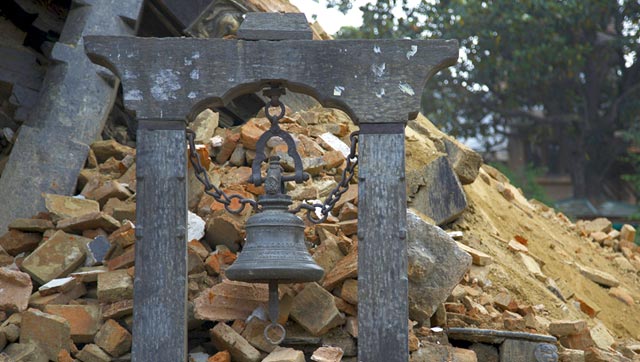he United States Geological Survey (USGS), which monitors earthquakes across the world, said on Wednesday that while the chances of future aftershocks in Nepal were lower than its previous forecast, strong tremors could be felt in the Himalayan nation in the next week.
“The aftershocks are a normal occurrence after large earthquakes, and are expected to continue in Nepal but occur less often with time. The probability of future aftershocks is lower than in our forecast of May 13 due to the additional time that has passed since magnitude 7.3 earthquake on May 12, 2015, which was itself an aftershock of the Gorkha mainshock,” the USGS said in an advisory released on Wednesday.
“Within the week of May 20 to May 26, the USGS estimates that the chance of at least one magnitude 5 to 6 aftershock is about 40% and up to 3 such events are likely to occur,” it said.
Two mild tremors were felt on Tuesday in Kathmandu and surrounding areas affected by the April 25 earthquake that killed nearly 9,000 people in Nepal. The temblor also hit parts of northern India, killing more than 60 people across Uttar, Bihar and West Bengal.
A second powerful earthquake in less than three weeks spread panic in Nepal on May 12, bringing down buildings weakened by the first disaster and killing at least 66 people, including 17 in neighbouring India and one in Chinese Tibet.
Most of the reported fatalities were in villages and towns east of Kathmandu, only just beginning to pick up the pieces from the April 25 quake.
A total of 248 aftershocks of over 4-magnitude have been recorded since the 7.8-magnitude earthquake hit Nepal.
“Aftershocks have the potential to create damage, just like other earthquakes… Some aftershocks may be strong enough to be felt widely throughout the area and may cause additional damage, particularly to vulnerable structures and those already weakened by the mainshock and the aftershocks,” the USGS said.
More than 600 temples, statues and museums across the country were damaged in Nepal’s deadliest earthquake on record, including Kathmandu’s 200-foot Dharahara Tower, built in 1832, which collapsed.








